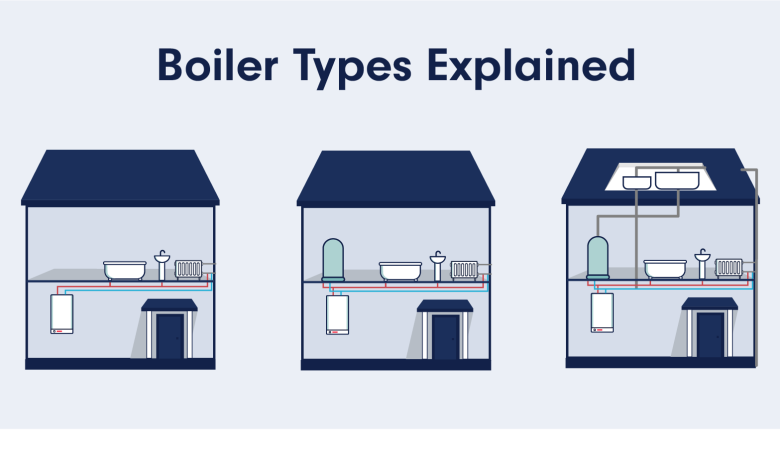Is Your Boiler Pressurized or Non-Pressurized? Key Questions to Determine Your System Type

Knowing whether your boiler is pressurized or non-pressurized can make all the difference in maintaining, operating, and increasing the life expectancy of the device.
Each type has its own need and specifications, and knowing which you have will make all the difference in materials and treatments that you select for operation of the device.
We are going to outline below the key features that help identify boiler types and pose some important questions in the process.
What’s the Difference Between Pressurized and Non-Pressurized Boilers?
These sealed systems are known as Pressurized Systems, where the water inside the system is kept under pressure so that it will never come in contact with the atmosphere. This system is quite common in indoor boilers.
Since the system operates as a sealed one, no oxygen can enter it, and hence corrosion is minimal. Still, the pressurized systems require Oxygen Barrier PEX pipes for additional protection against oxygen infiltration.
Non-Pressurized Systems, on the other hand, are open to atmosphere and usually found in outdoor wood boilers. These systems do not build pressure and usually make use of Non-Oxygen Barrier PEX pipes.
Since the system is exposed to air, there is more risk of corrosion, and that is why it is of utmost importance to add a water treatment such as Liquid Armor that will inhibit rust among other damages.
Basic Questions to Ask While Hiring an AV System from Agency?
Key Questions to Determine If Your Boiler Is Pressurized or Non-Pressurized
- Does your boiler have a vent at the top like an exhaust?
If the top of your boiler has a vent to let air out or is open to the atmosphere, then this will most certainly confirm if your boiler is not pressurized. Non-pressurized systems, especially in outdoor boilers, have a vent or chimney that steam and/or air can be released from. - Do you use a circulator pump?
While both types of systems can make use of circulator pumps, having one or not does not make it the identifying mark. You need to take a closer look if your boiler is sealed or vented. - Is your boiler indoors or outdoors?
Indoor boilers are generally pressurized systems, and the wood boilers that are outdoors are primarily non-pressurized. If your boiler is outdoors and you find some open vents, then it is likely non-pressurized. - Do you use Oxygen Barrier PEX pipes?
Most boilers require Oxygen Barrier PEX piping to help prevent oxygen from entering the system and causing corrosion. If that’s the case with your boiler, most likely it’s pressurized. Non-pressurized systems would call for Non-Oxygen Barrier PEX.
Why Does It Matter?
Knowing whether you have a pressurized or non-pressurized system is just the beginning of many specific implications in the method to maintain your system.
Non-pressurized systems need extra tender loving care, as they are open to air and can easily corrode. Poor piping or failure to treat the water will lead to system damage and inefficiency, which is costly to repair.
Non-pressurized systems need a corrosion-inhibiting water treatment, like Liquid Armor. It will maintain your system against rust and deterioration.
Conclusion
The first big question is whether your boiler is pressurized or not, since doing so will determine a large part of your maintenance routine and the choice of material to use.
Pressurized systems are closed to the atmosphere and must use Oxygen Barrier PEX for corrosion resistance, while non-pressurized systems are open to the atmosphere and require Non-Oxygen Barrier PEX in conjunction with corrosion-inhibiting water treatments like Liquid Armor.
Knowing your boiler type and taking appropriate steps will help you protect your system, improve its efficiency, and avoid costly repairs.
If you need further assistance in choosing the proper piping or water treatment for your boiler system, take a look at our selection of underground insulated pipe at Outdoor Boiler.
We carry products for both pressurized and non-pressurized systems so your boiler will work correctly through every season of the year. Understanding your system type is the first step to maintaining its performance and extending its life.




